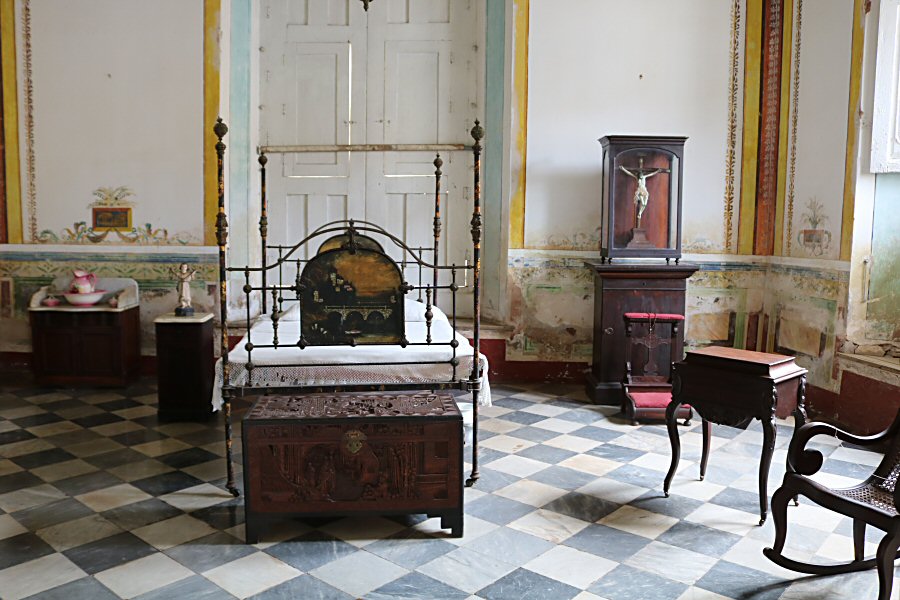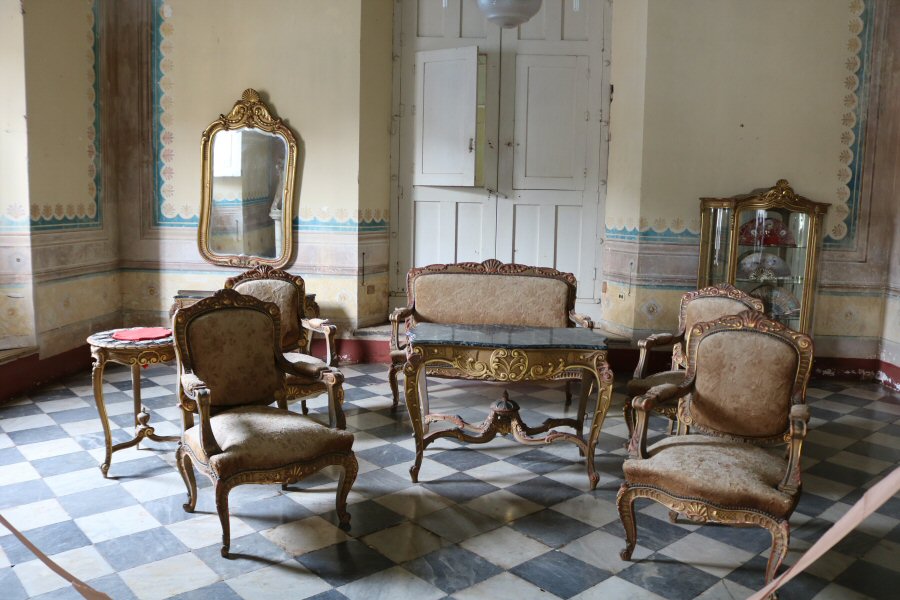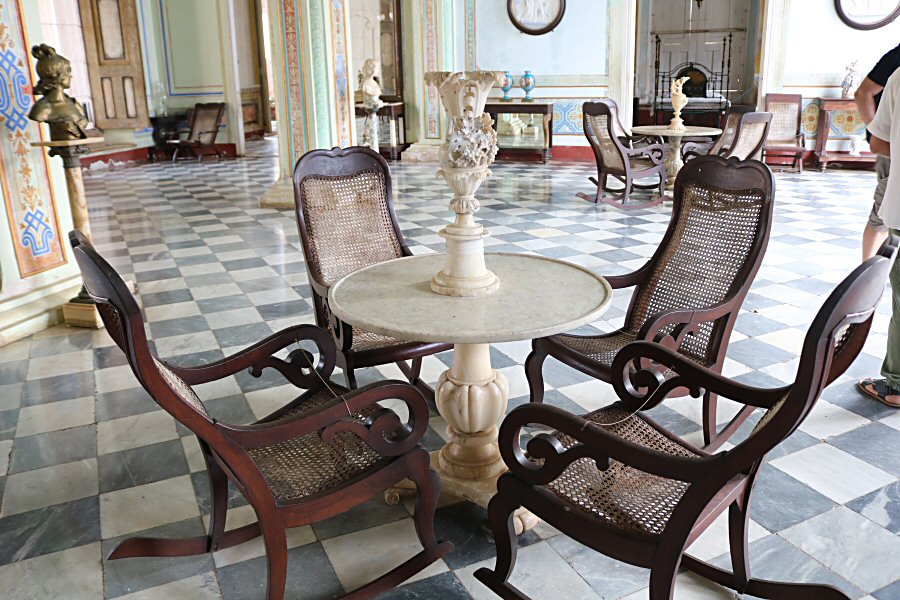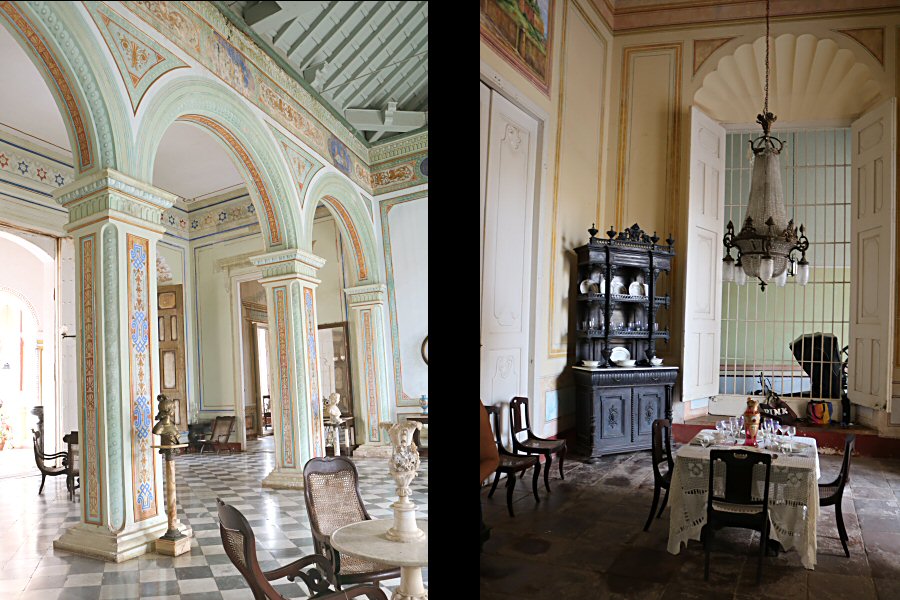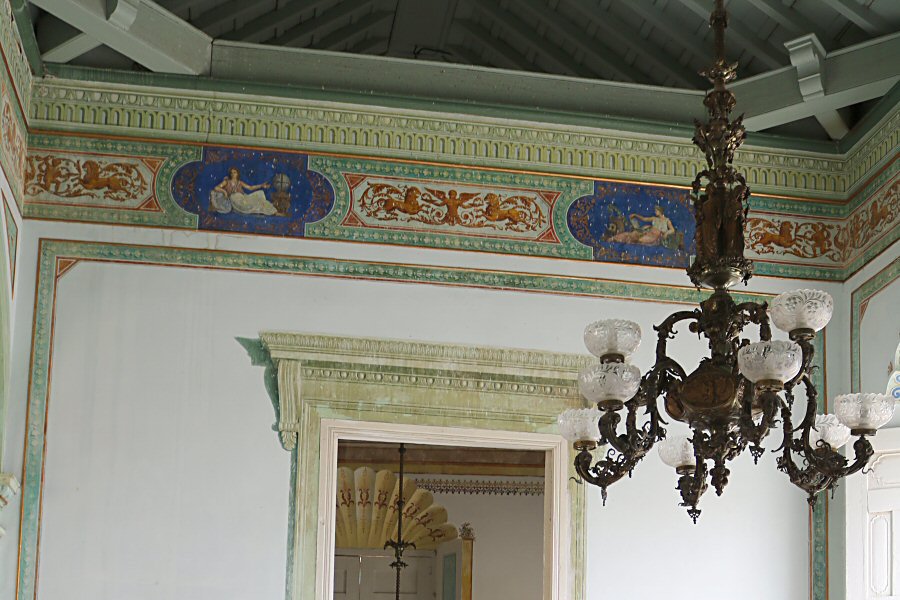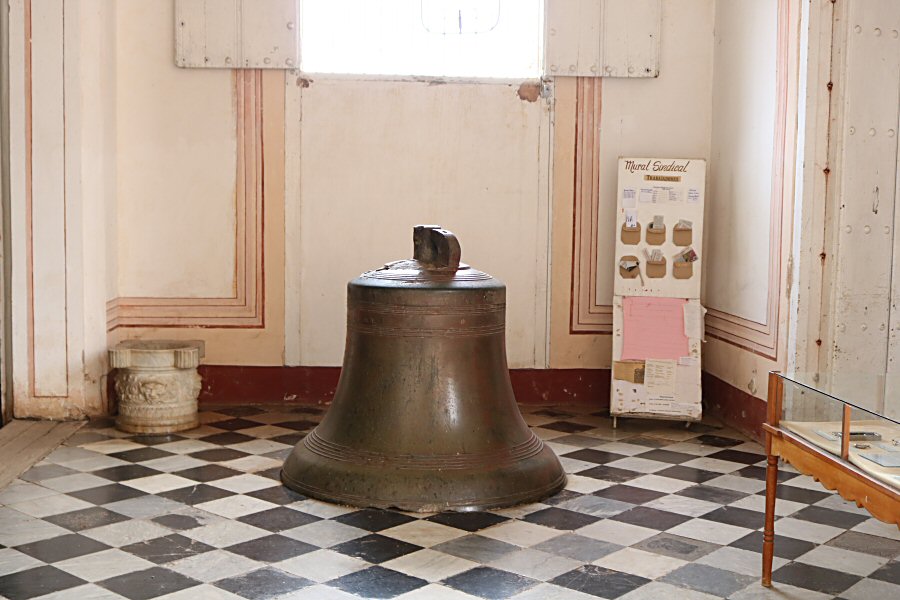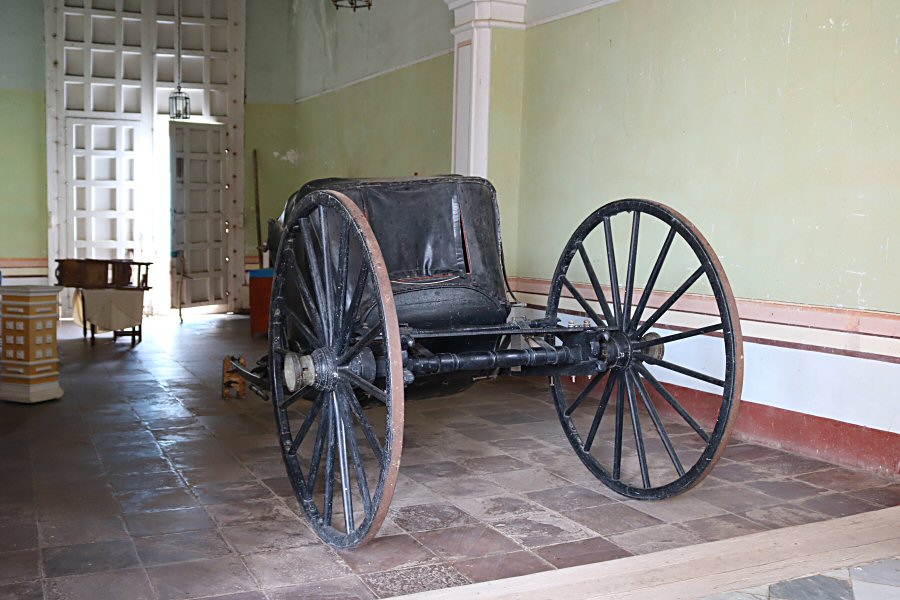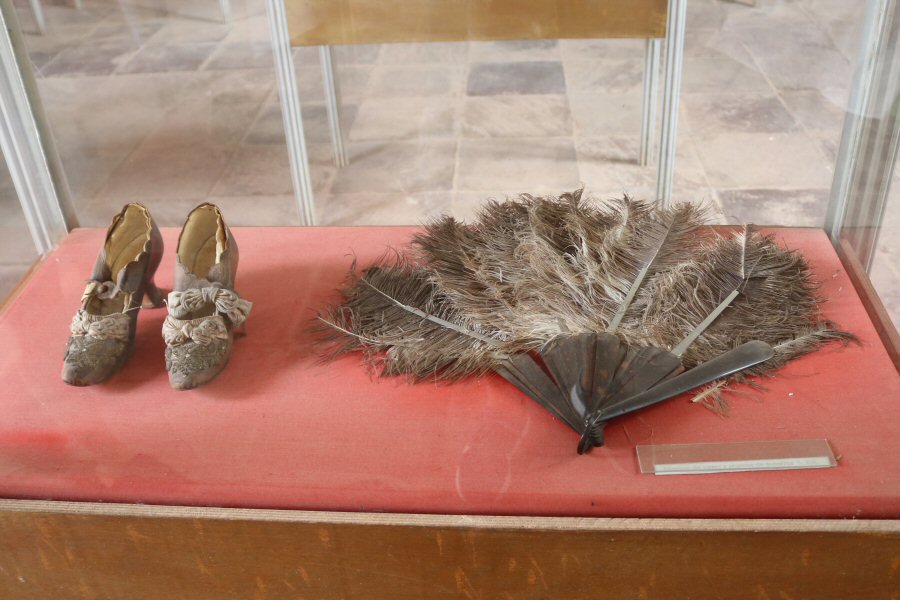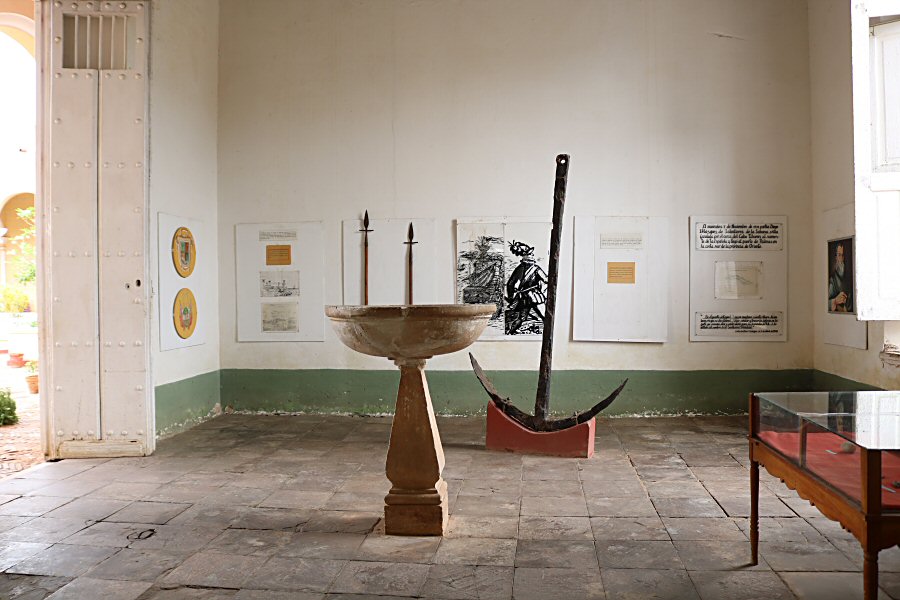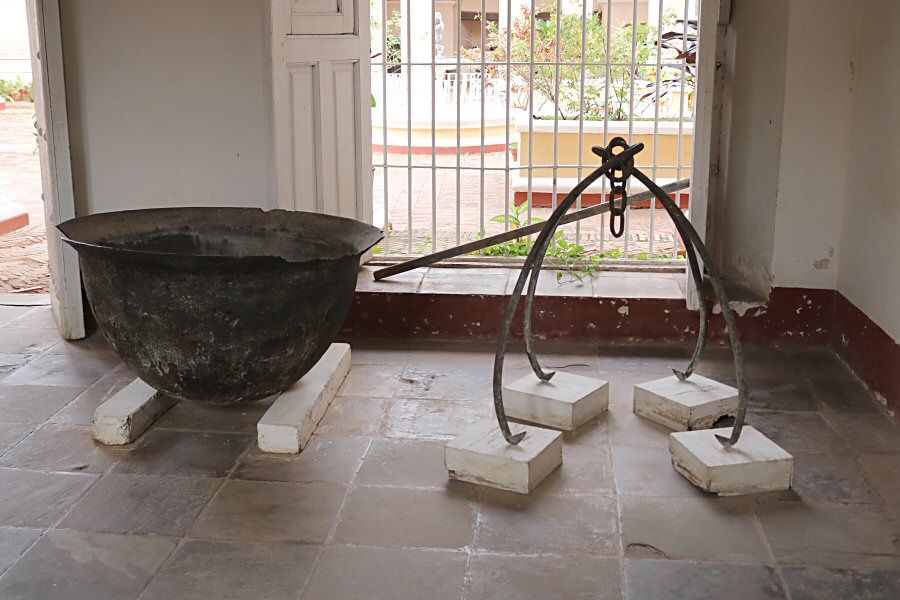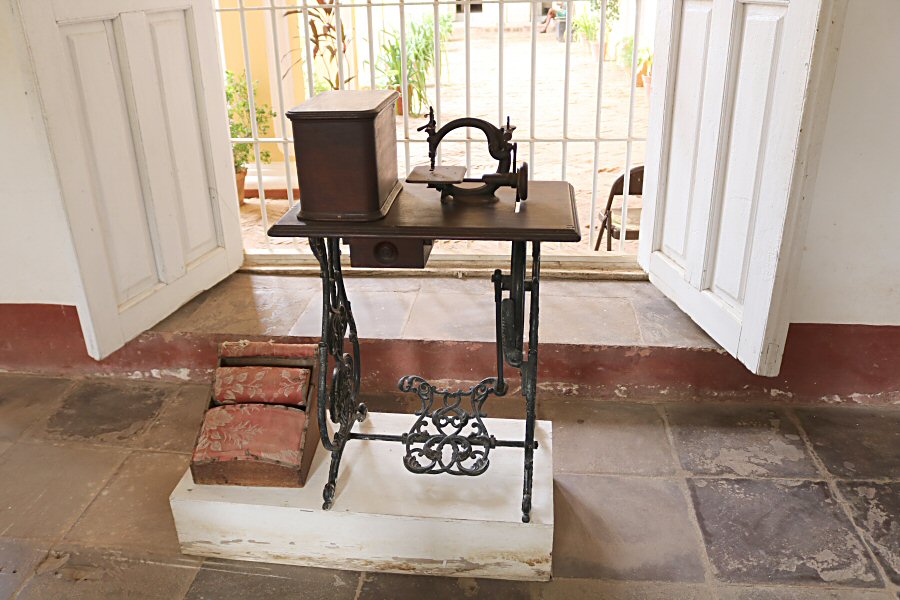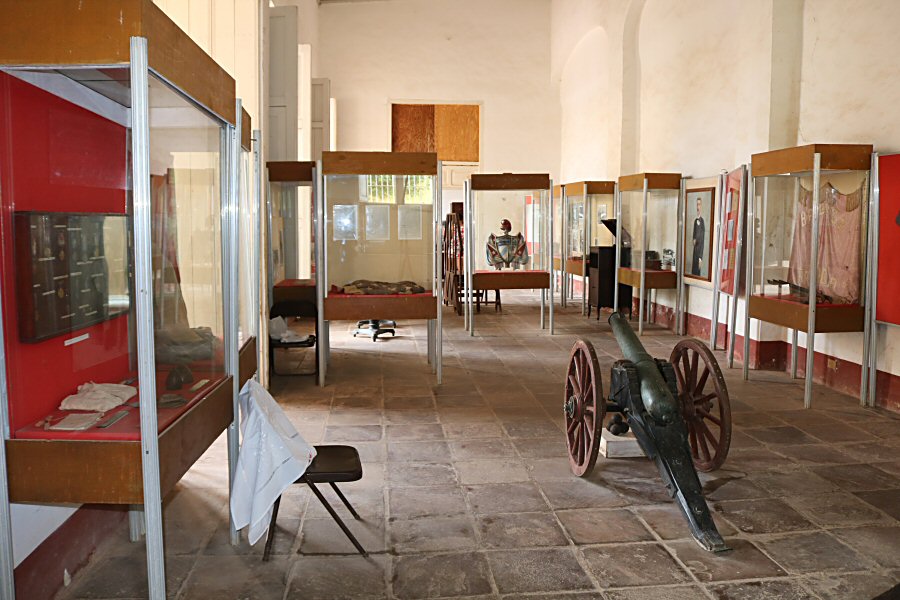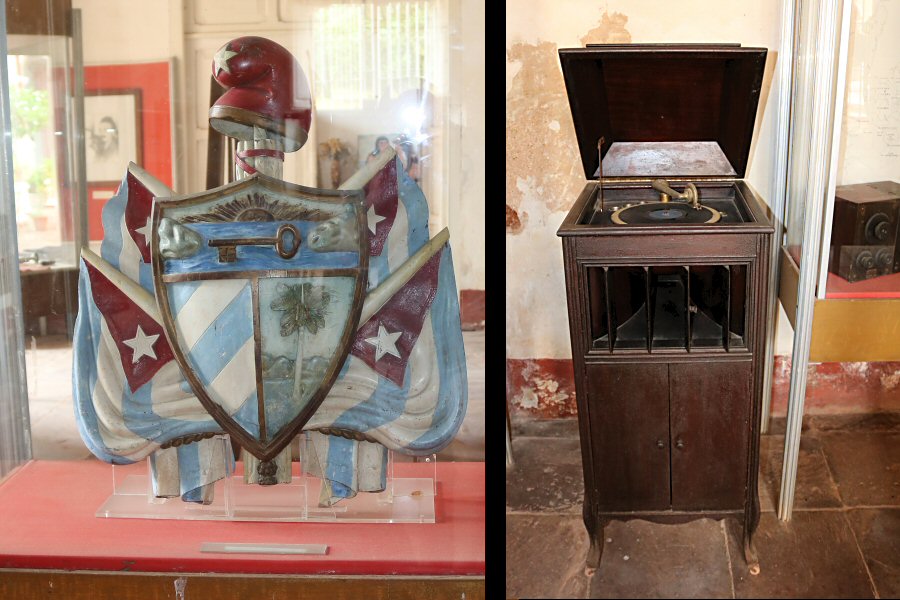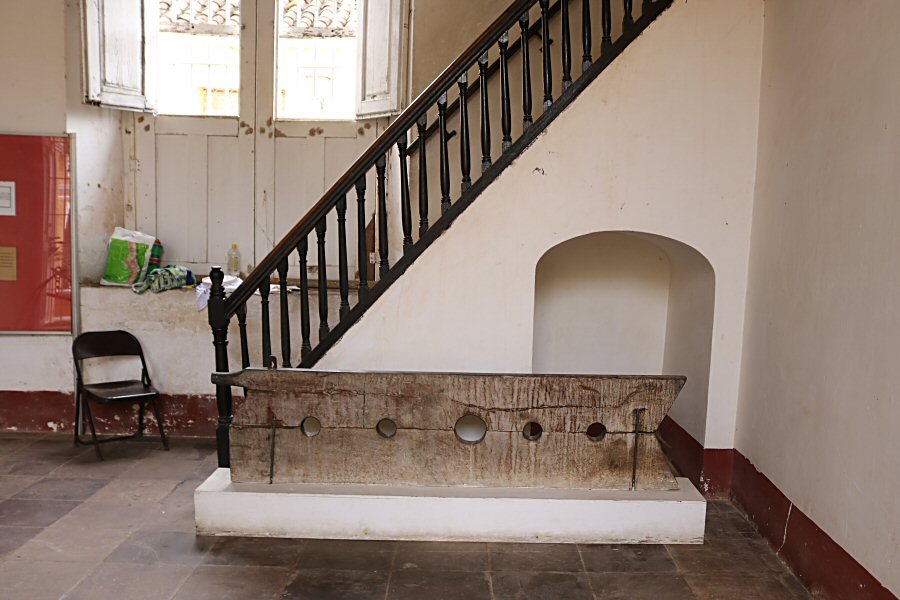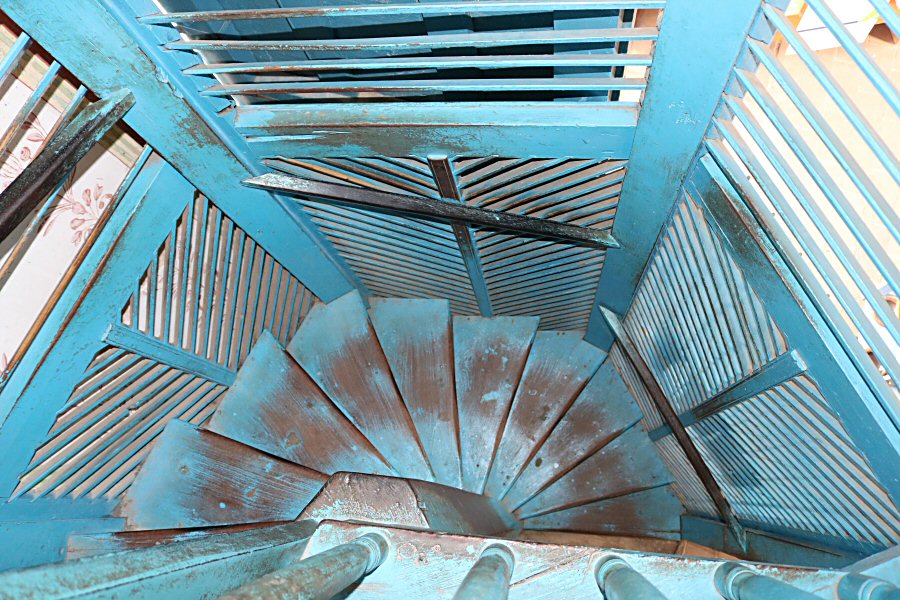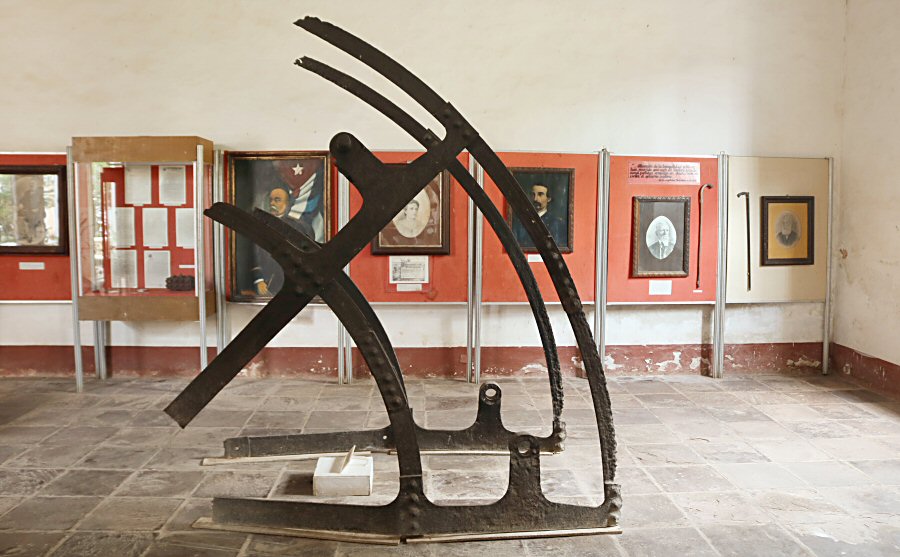
The Museum
The well-preserved murals in the building are very striking. The murals you see on the left side and in the watchtower were painted in 1839 by some well-known Trinidadian artists. The murals in the living room, parlor and bedroom on the right of the house were painted by a group of Italian artists in 1860. The building has a palace atmosphere with its rich wall decorations.
The first four rooms of the museum are furnished similar to the state of the house in the last century, reflecting the wealth and the taste of Trinidad’s sugar industry families; in this case the Canteros.
The main rooms, the living room and the parlor have Cuban style furniture and decorative works of art, brought mainly from France, Italy and the United States.
In the first temporary exhibition room you will see a 19th century bedroom with a set of furniture that is a good copy of the Louis XV style.
The room on the left was used as an office. The room is furnished in accordance with its time. It includes also the portraits of the owners of the house (Germán Cantero and his wife) and decorative works of arts.
The following rooms, starting from the second temporary exhibition room, showed the development of the town's history since its founding by Diego Velásquez in 1514 on the banks of the Arimao River. The British-made cannon in the weapons room, which was brought to protect the city from pirates and put the city on alert, the shield of the republic from 1890, 19th-century tortoiseshell fan and ostrich feathers, the stylish shoes of the landlady, a boiler and equipment used in molasses production, old sewing machine, a gramophone from the early twentieth century are among the interesting objects you will come across in these back rooms.
In the room dedicated to the sugar industry in Trinidad reveals how wealth was obtained through slaves.
In another exhibition room, there are photographs, oil portraits and some documents of the leading figures in the independence struggle in Trinidad.
The bell exhibited belonging to the Iznaga family is one of the important pieces of the museum.
The kitchen, with its large stove and ovens for roasting meat and fish, is good preserved.
On the hallway you will find a 19th century quitrin, that belonged to the Cantero family and it was used by them to move from the city to the valley.
A spiral staircase leads up into a tower providing some great views, including a classic snapshot of the Plaza Mayor and the emblematic tower of the Museo Nacional de Lucha contra Bandidos. It is accessible from the courtyard.
The well-preserved murals in the building are very striking. The murals you see on the left side and in the watchtower were painted in 1839 by some well-known Trinidadian artists. The murals in the living room, parlor and bedroom on the right of the house were painted by a group of Italian artists in 1860. The building has a palace atmosphere with its rich wall decorations.
The first four rooms of the museum are furnished similar to the state of the house in the last century, reflecting the wealth and the taste of Trinidad’s sugar industry families; in this case the Canteros.
The main rooms, the living room and the parlor have Cuban style furniture and decorative works of art, brought mainly from France, Italy and the United States.
In the first temporary exhibition room you will see a 19th century bedroom with a set of furniture that is a good copy of the Louis XV style.
The room on the left was used as an office. The room is furnished in accordance with its time. It includes also the portraits of the owners of the house (Germán Cantero and his wife) and decorative works of arts.
The following rooms, starting from the second temporary exhibition room, showed the development of the town's history since its founding by Diego Velásquez in 1514 on the banks of the Arimao River. The British-made cannon in the weapons room, which was brought to protect the city from pirates and put the city on alert, the shield of the republic from 1890, 19th-century tortoiseshell fan and ostrich feathers, the stylish shoes of the landlady, a boiler and equipment used in molasses production, old sewing machine, a gramophone from the early twentieth century are among the interesting objects you will come across in these back rooms.
In the room dedicated to the sugar industry in Trinidad reveals how wealth was obtained through slaves.
In another exhibition room, there are photographs, oil portraits and some documents of the leading figures in the independence struggle in Trinidad.
The bell exhibited belonging to the Iznaga family is one of the important pieces of the museum.
The kitchen, with its large stove and ovens for roasting meat and fish, is good preserved.
On the hallway you will find a 19th century quitrin, that belonged to the Cantero family and it was used by them to move from the city to the valley.
A spiral staircase leads up into a tower providing some great views, including a classic snapshot of the Plaza Mayor and the emblematic tower of the Museo Nacional de Lucha contra Bandidos. It is accessible from the courtyard.
